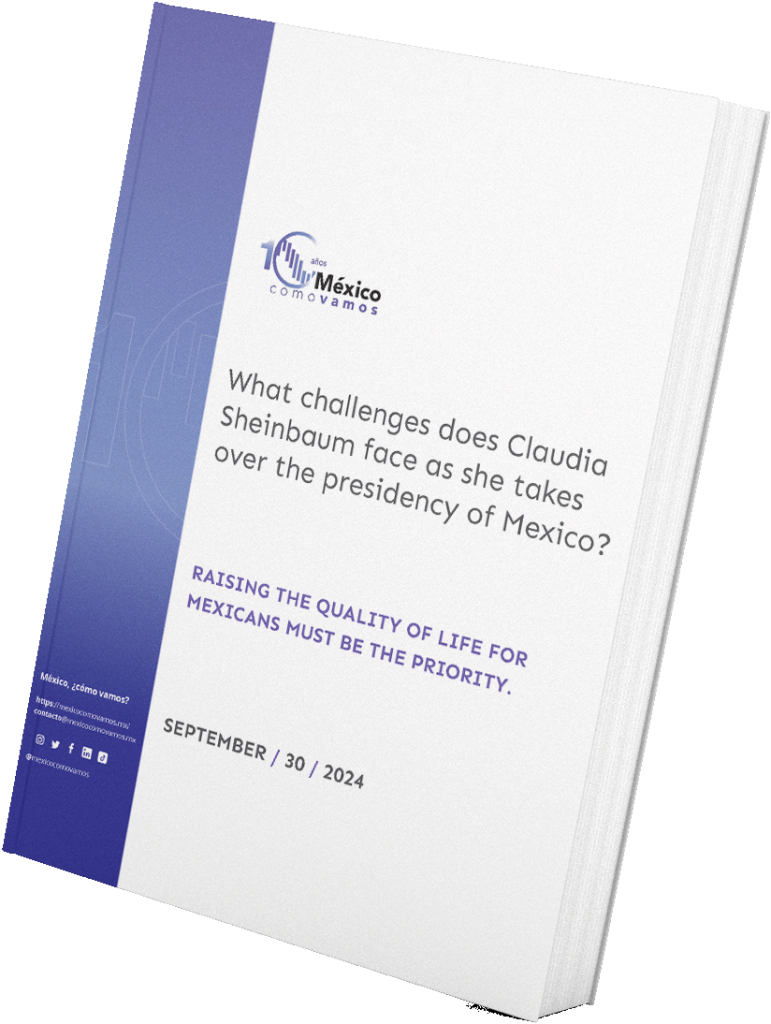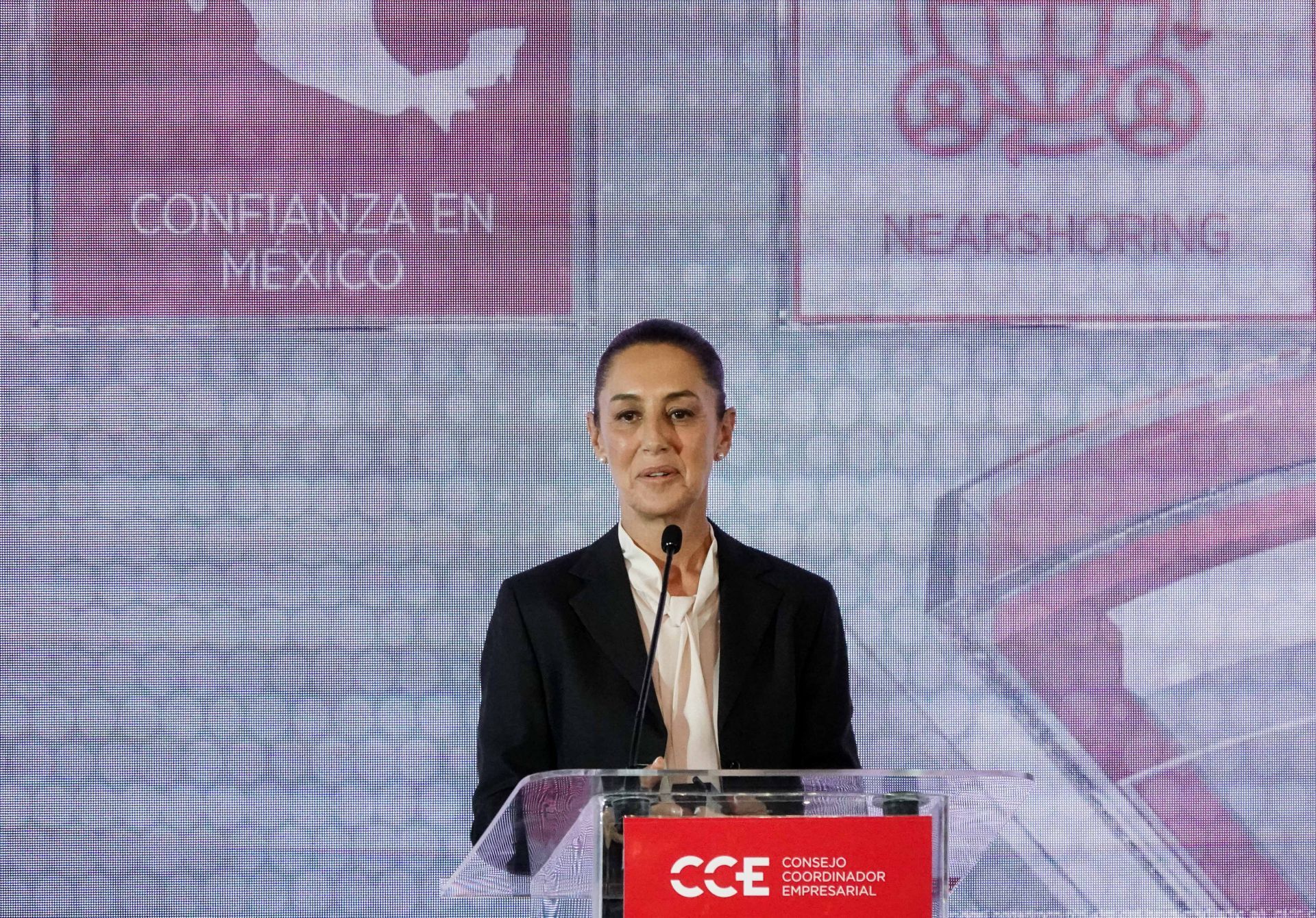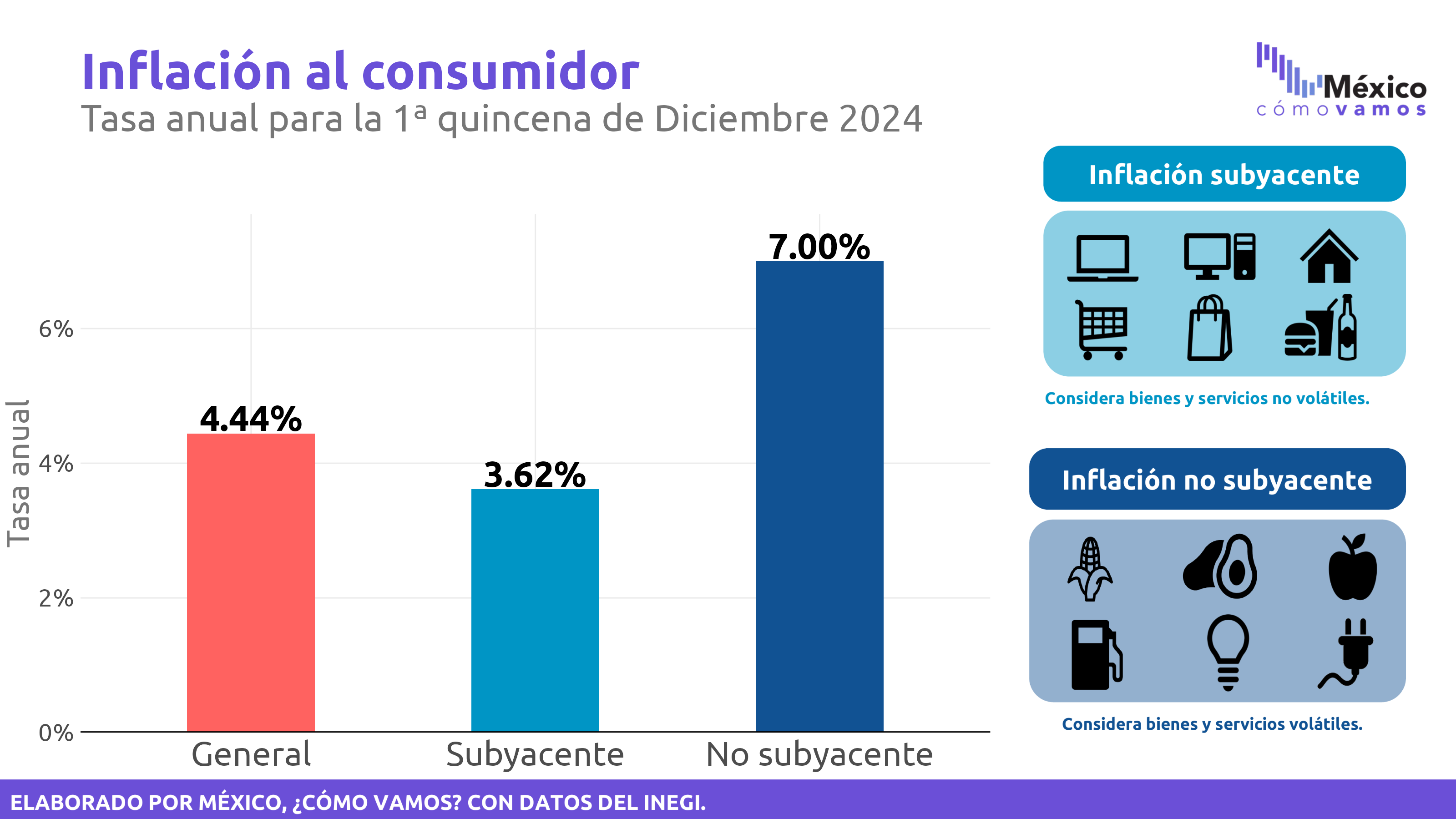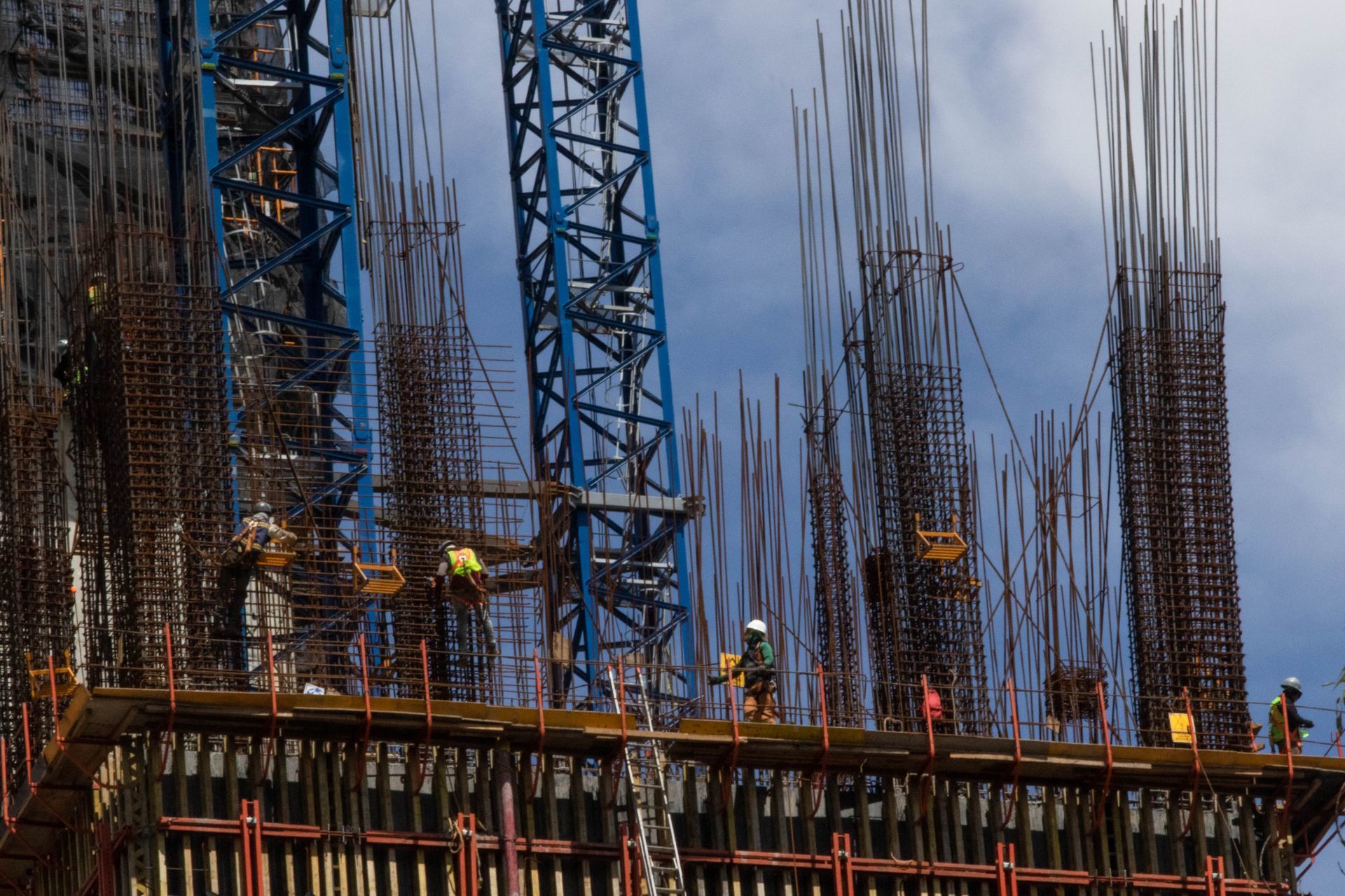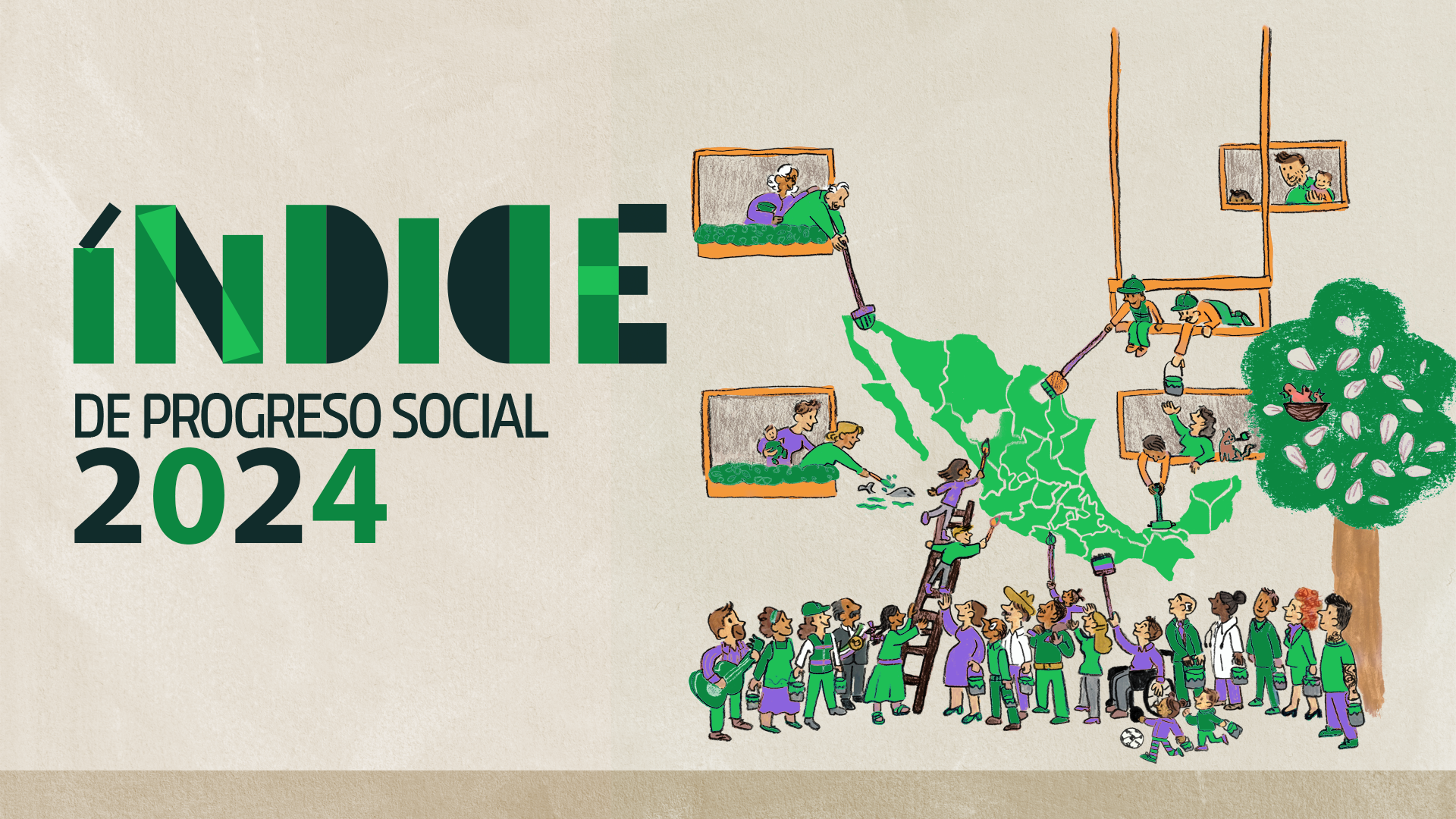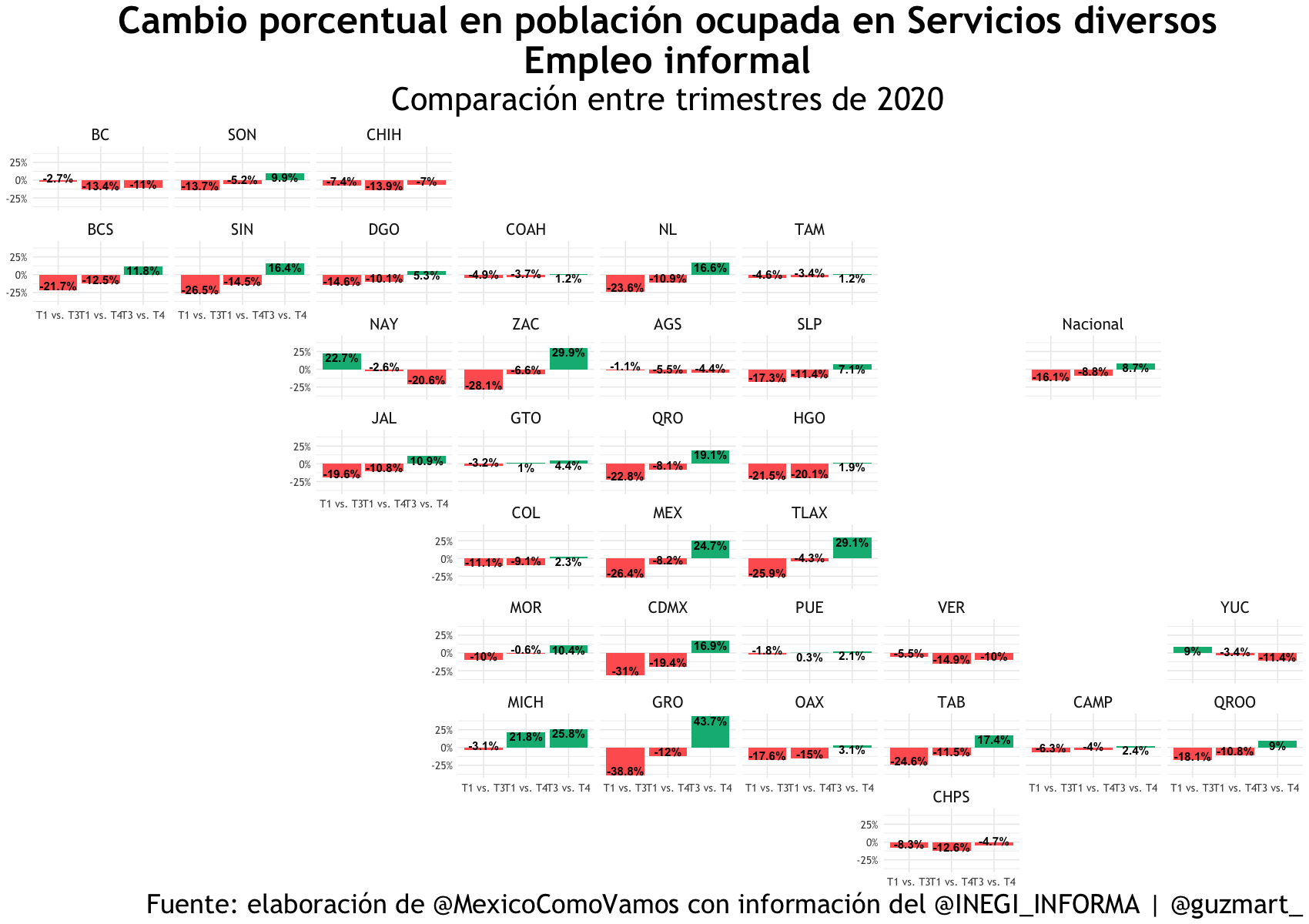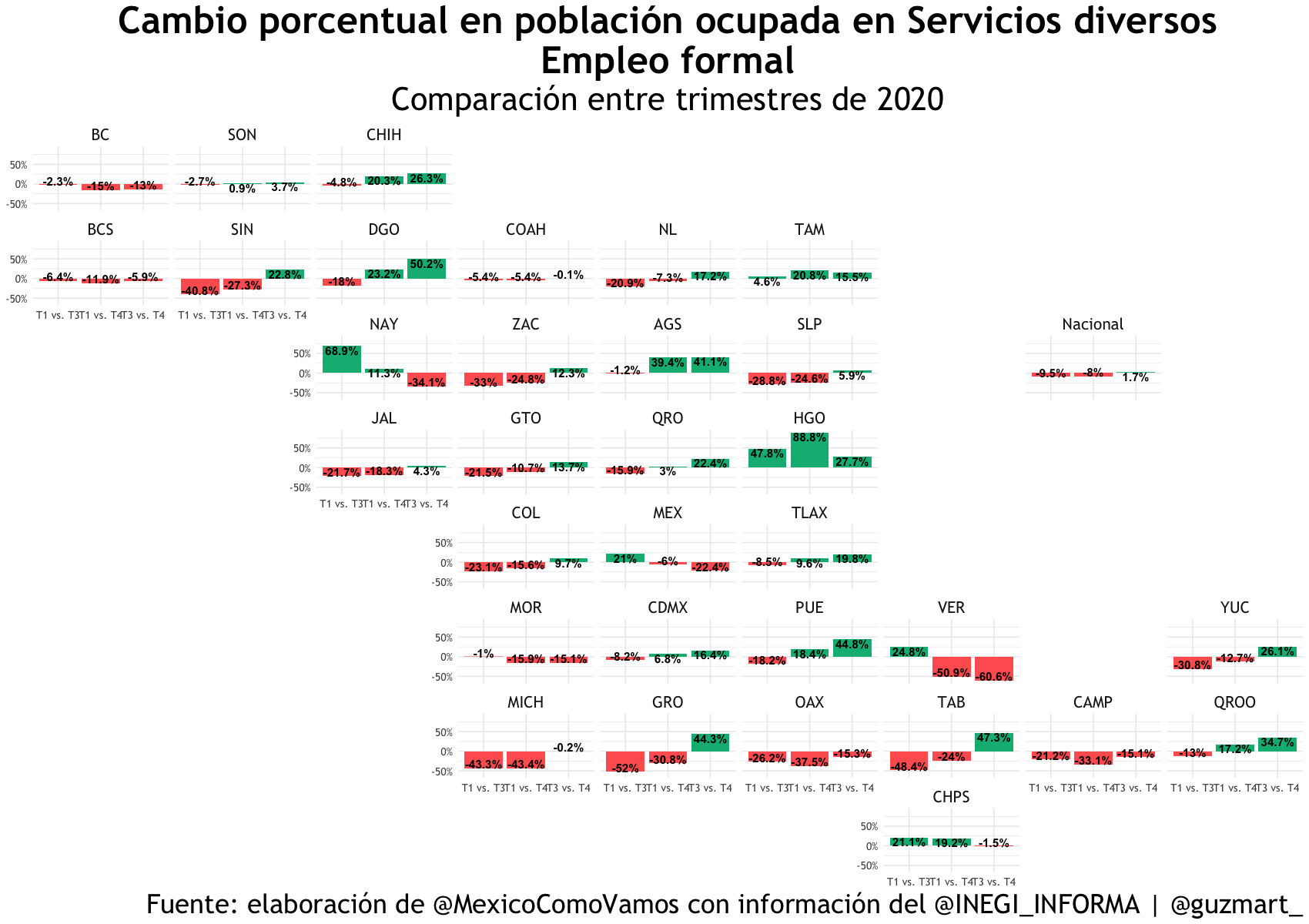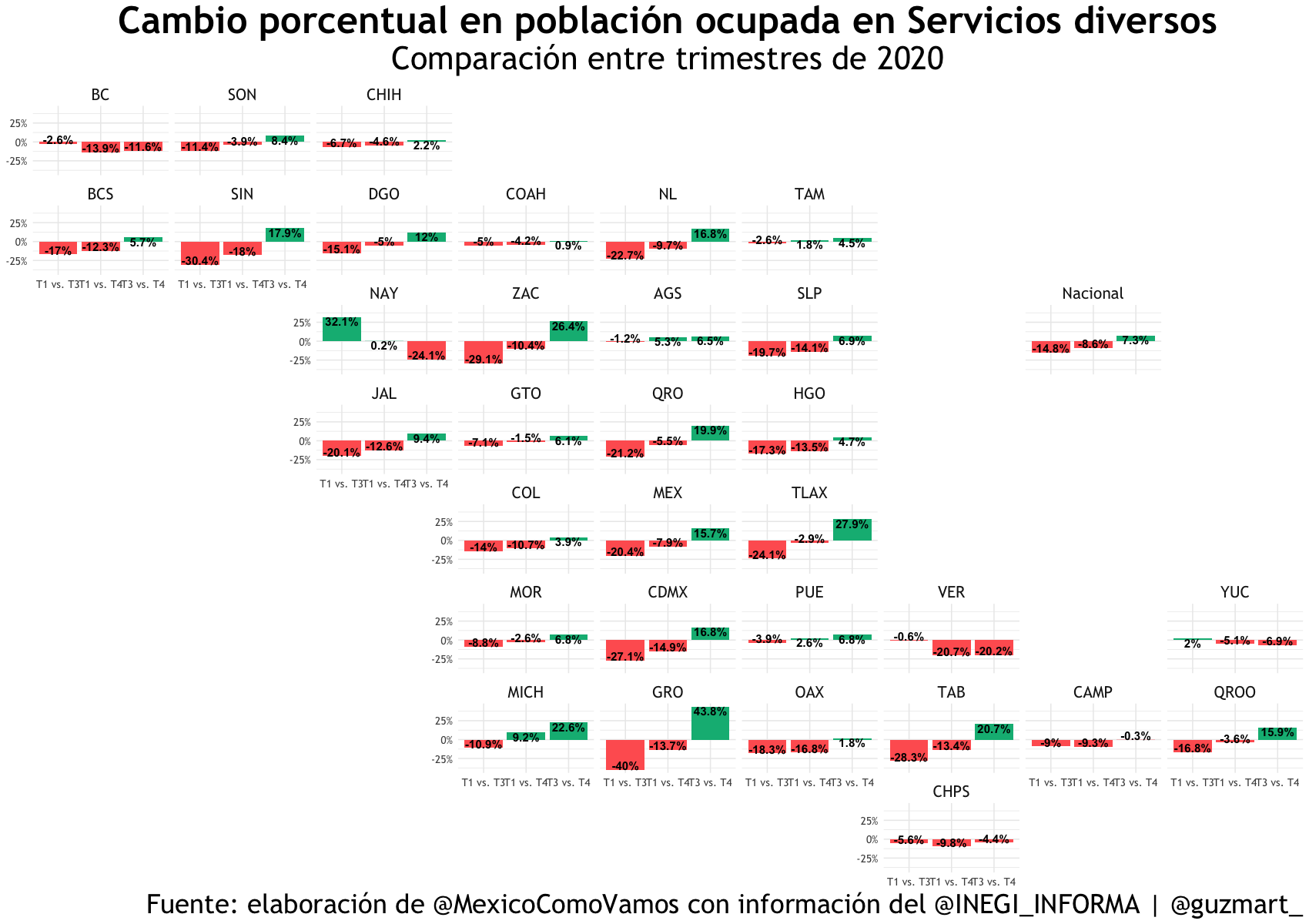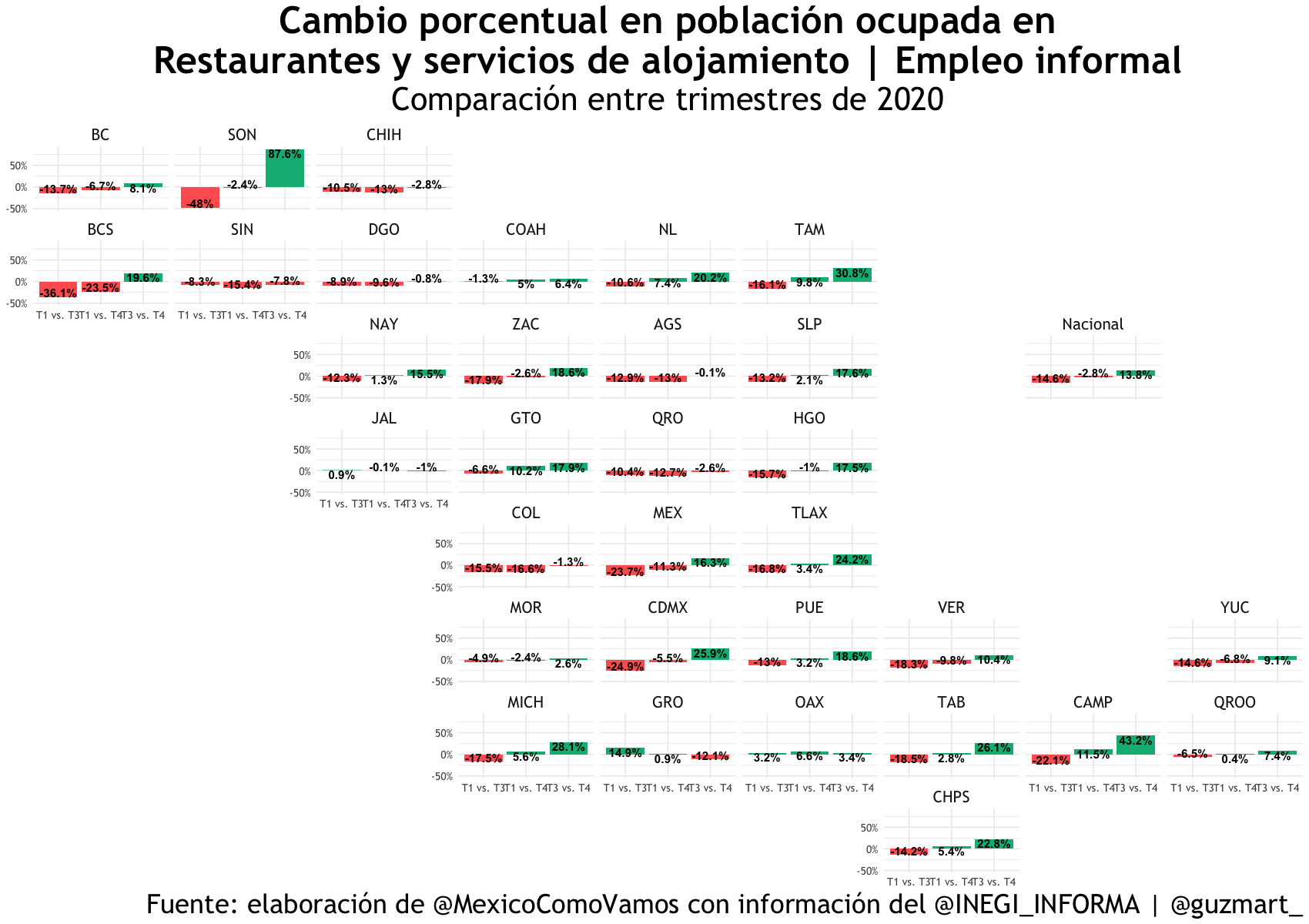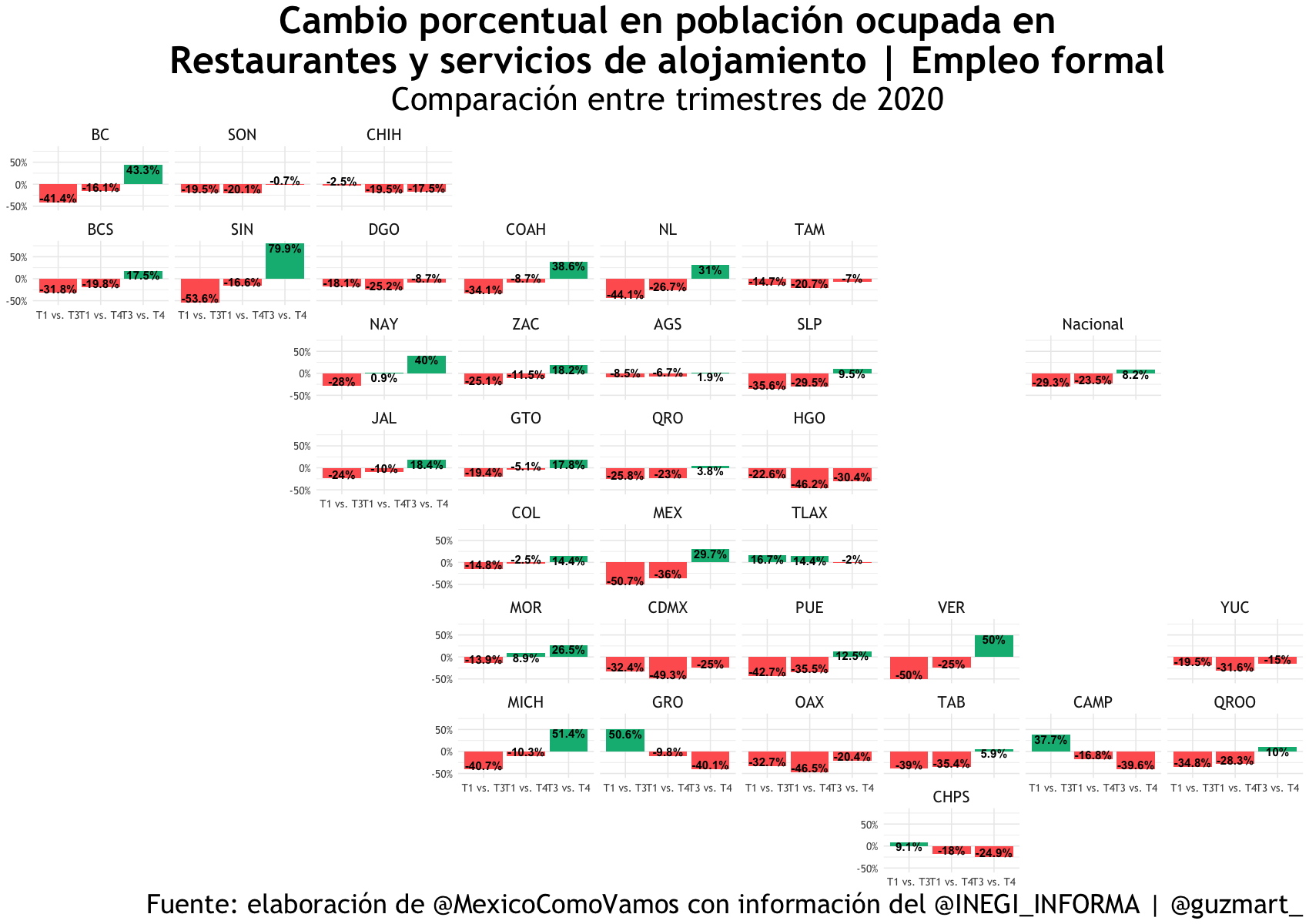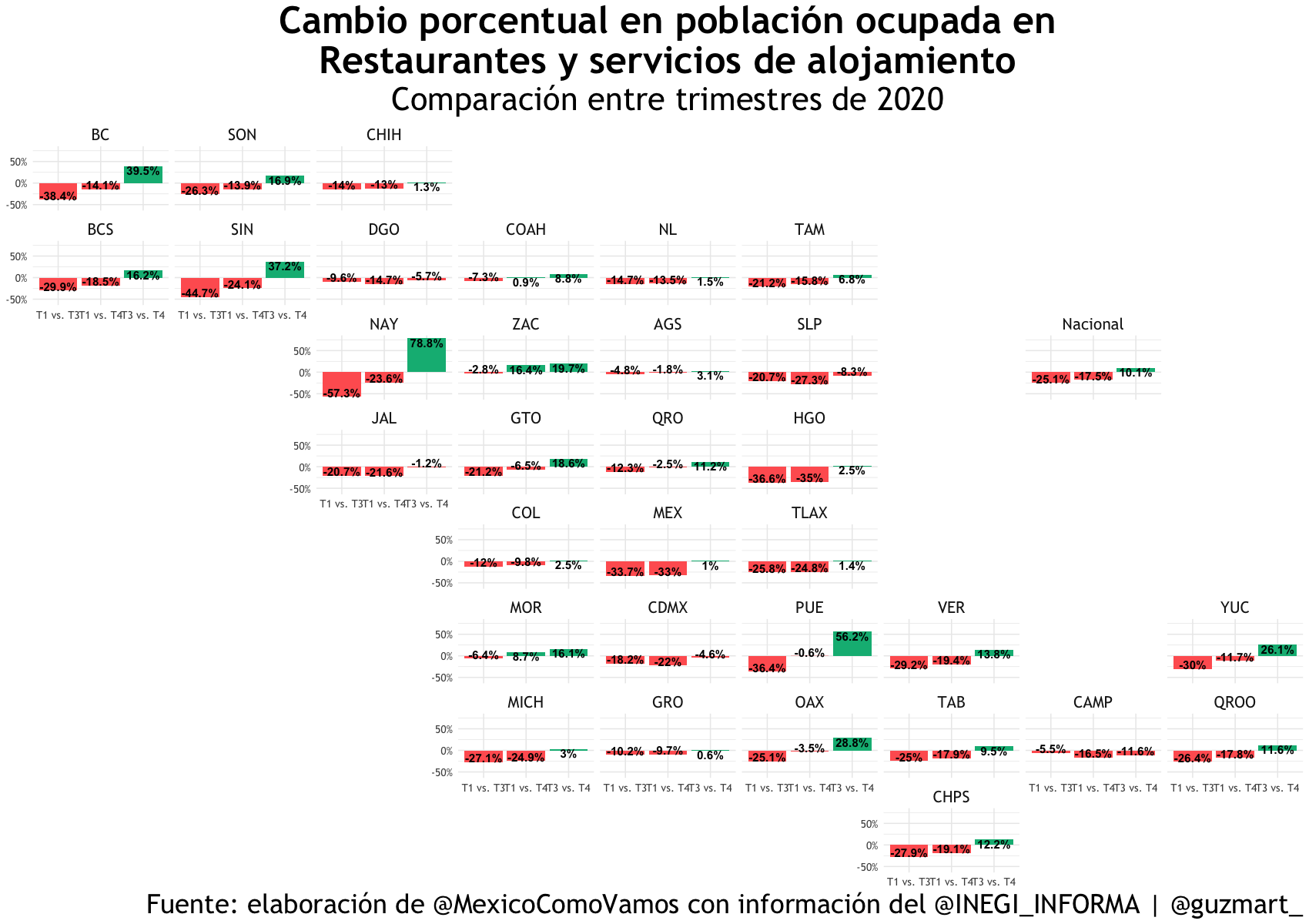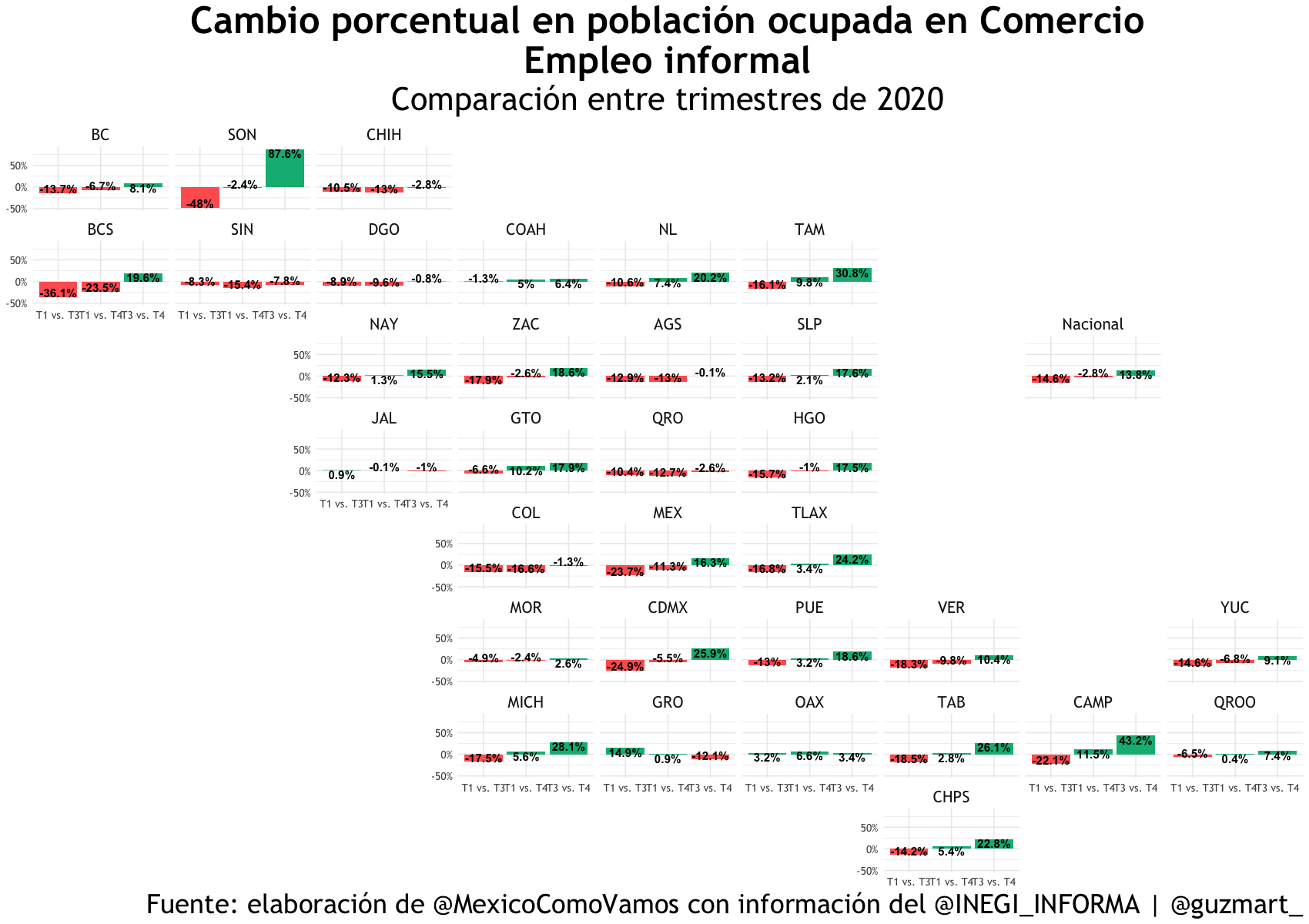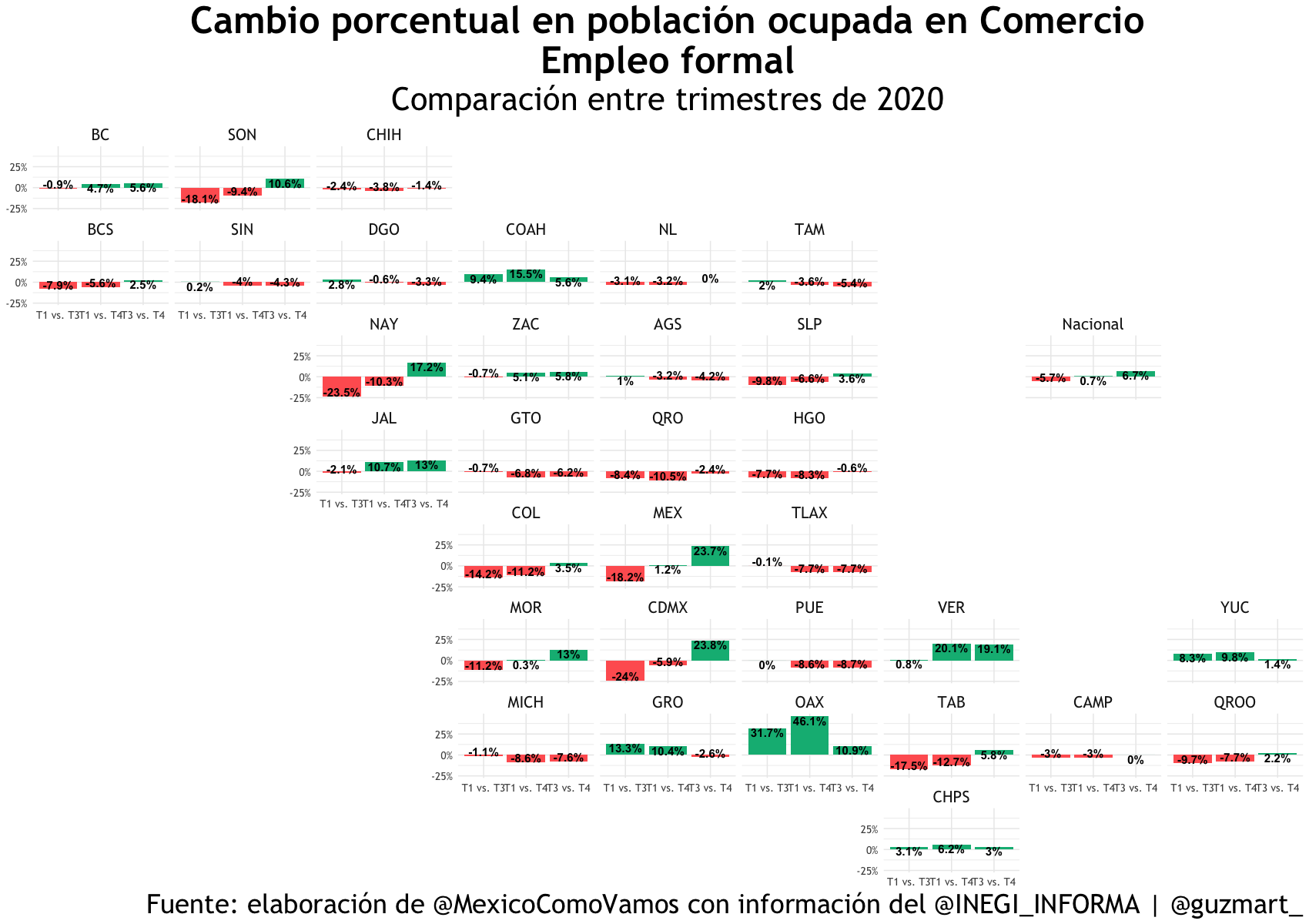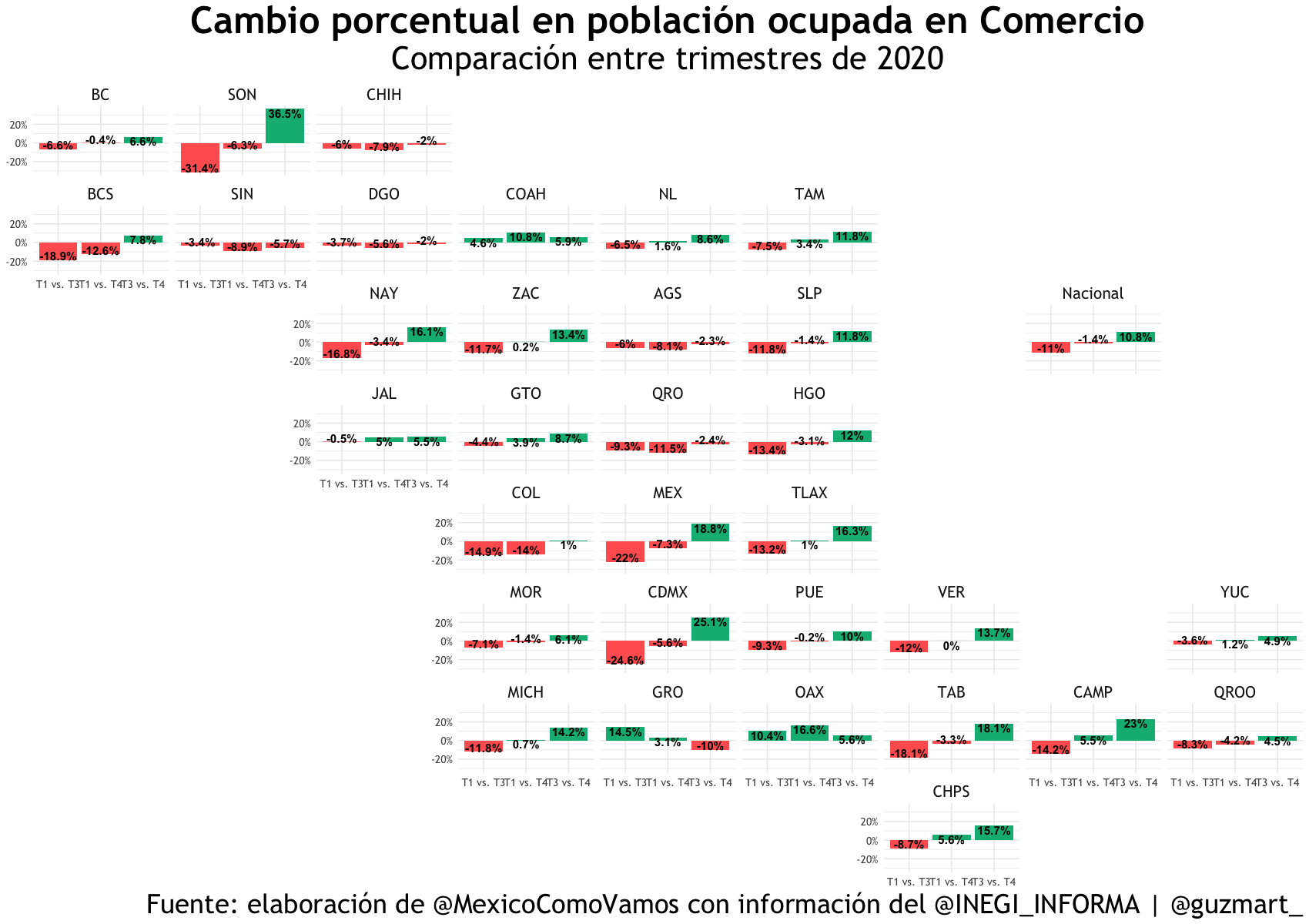What challenges and opportunities lie ahead for Mexico under President Sheinbaum?
Tune in to our podcast series for expert insights into the economic and social variables that will define this six-year term. Raising the quality of life for Mexicans must be a top priority.
Audio generado por NotebookLM, Google, 30 de septiembre de 2023, https://notebooklm.google
What challenges does Claudia Sheinbaum face as she takes over the presidency of Mexico?
Raising the quality of life for mexicans must be the priorityOctober 1st, 2024, marks the beginning of a historic six-year term in Mexico, with Claudia Sheinbaum assuming the presidency as the first woman to lead the Federal Executive.
The challenges her administration faces are not minor.
Sheinbaum must find a balance between maintaining a dynamic economy and improving the well-being of the population. To do so, she will need to attract investment and generate quality jobs, all within an uncertain global and national context. Globally, factors include the economic slowdown in the United States —our main trading partner—, the review of the USMCA in 2026, along with the opportunities offered by nearshoring in Mexico.
Domestically, violence and the presence of organized crime in the North, West, and Southeast of the country affect people’s quality of life, directly harm family wealth and income, and undermine the local economy. The implementation of a judicial reform, in the terms approved, will have no effect on reducing rampant impunity (the dark figure of crime) —92.9% of crimes go uninvestigated (ENVIPE, 2023)— and will carry enormous costs in terms of attracting investment, which is what generates quality jobs.
Quality Employment and Ensuring Access to Basic Services
The main challenge for Claudia Sheinbaum’s administration will be to implement policies that boost the prosperity of Mexican families, focusing on quality jobs, access to healthcare, quality education, enhanced public safety, and access to telecommunications.
Budget Constraints Demand Greater Co-Investment
Claudia Sheinbaum’s presidency will face significant budgetary constraints, unlike those experienced by Andrés Manuel López Obrador (AMLO) at the start of his term. Therefore, greater private sector participation in the provision of public services through co-investment schemes will be necessary. In this regard, strong regulatory bodies and a renewed emphasis on transparency and accountability will be more crucial than ever.
Uncertainty Discourages Investment
Despite the expected continuity between President López Obrador’s administration and that of President Claudia Sheinbaum, the institutional landscape has changed significantly. The qualified majority of the ruling coalition in both the Chamber of Deputies and the Senate has pushed through constitutional reforms under AMLO’s so-called “Plan C” –submitted as a legislative package on February 5, 2024– has generated considerable uncertainty in various productive sectors and among trade partners, with costs that remain unquantified.

Drastic constitutional changes, such as the recent judicial reform, alter the institutional playing field. The lack of independence among the branches of government and the potential dismantling of regulatory bodies—such as COFECE, IFT, CRE, and CNH (for their initials in spanish) which ensure free market competition—pose challenges that could contradict our commitments under international agreements like the USMCA. This comes at a time when the opportunity to create shared prosperity is closely tied to regional production integration in North America, which demands legal certainty.
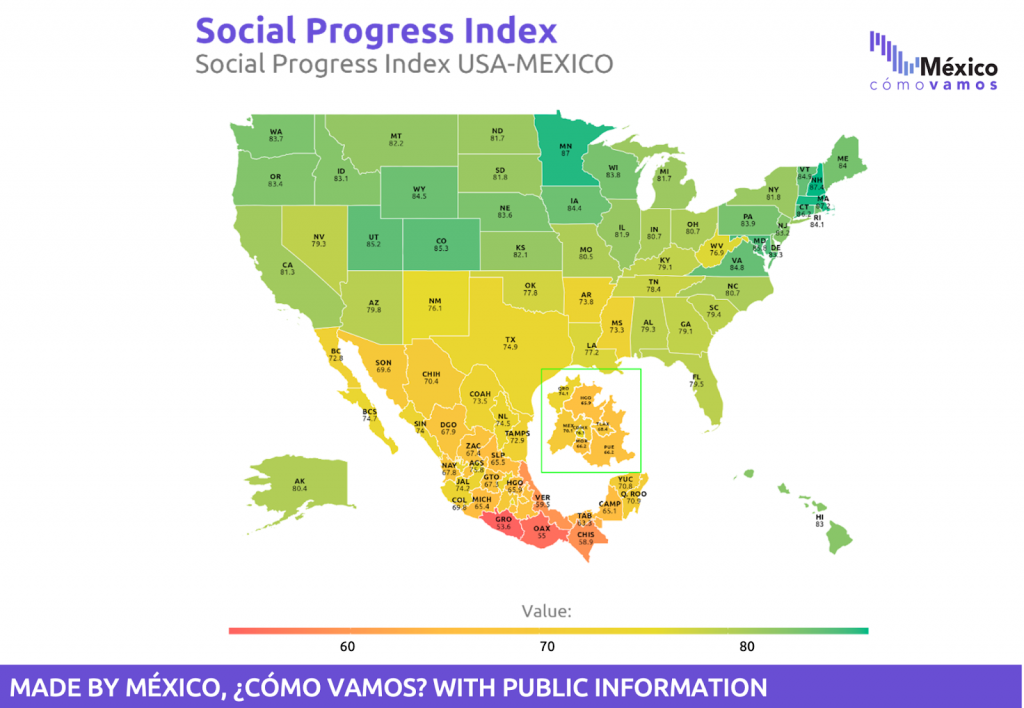
Economic Competition: Better Quality and Lower Prices
After more than three years of high inflation, promoting free competition is crucial, as it ensures fair prices for families from the production of everything we consume.
Transparency and Efficiency in Public Spending
Personal data protection and access to public information are essential to generating well-being. Likewise, transparency in public spending is vital for the efficiency of the upcoming government.
In México, ¿cómo vamos? we assess the country’s economic and social wellbeing conditions as it enters Claudia Sheinbaum’s six-year term.
There are many challenges to ensuring that North American integration translates into shared prosperity, to integrating Mexico’s Southeast into the national growth trajectory, and to doing so in an inclusive and sustainable way.
This also presents a historic opportunity to implement economic policies with a gender perspective and to improve the quality of employment accessible to all people in Mexico.
How are we doing?
- Mexico needs a National Development Plan that enables it to achieve higher economic growth rates. The Mexican economy took two years to recover from the pandemic’s impact, considering only GDP levels, without accounting for losses in health and education. In 2024, the country has not yet managed to capitalize on nearshoring to boost national growth, and the uncertainty from recent reforms has negatively affected growth forecasts for 2025.
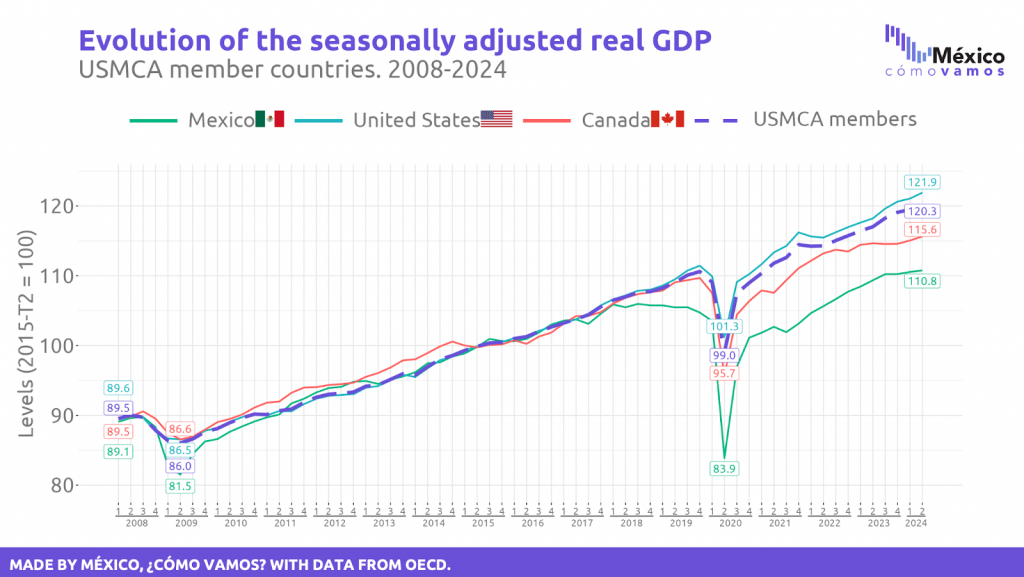
- GDP per capita remains at a level similar to that of 2017 and appears stagnant due to the slow pace of national economic growth.
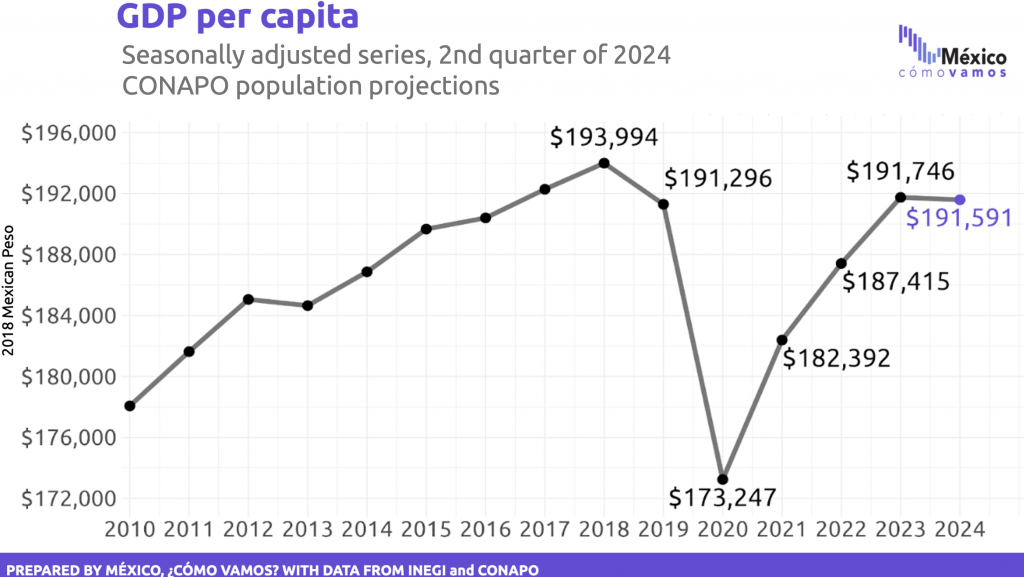
- More than half of the employed population (54.3%) is in informal employment; 28.1% of the working population is in vulnerable conditions in the informal sector, 13.4% work in businesses or government without social security, and the rest of the informal employment (12.7% of the employed population) is found in the agricultural sector and domestic work. These types of informal labor not only lack access to social security but also have the lowest average wages.
- Differentiated economic policies are needed to offer quality employment to more people: investment in logistics infrastructure that benefits all businesses and companies, promoting access to credit for micro, small, and medium-sized enterprises (MSMEs or MiPymes in spanish), and ensuring access to healthcare and care infrastructure, regardless of people’s employment status.
- During López Obrador’s administration, only 1.9 million new jobs were created and registered with the Mexican Social Security Institute (IMSS), reaching just 26% of the goal of creating 7.2 million new jobs during the six-year term. The economic traffic light from México, ¿Cómo Vamos? indicates that the goal is to create 1.2 million new jobs per year to incorporate those who join the Economically Active Population each month.
- The labor participation gap between men and women is close to 30 percentage points, and the wage gap ranges between 18 and 20 percentage points, despite young women in Mexico currently having more years of formal education than men. The unmet demand for a Care System is estimated to affect 2.2 million women who would like to work but cite their circumstances as preventing them from doing so.
- More than 45 million Mexicans are living in labor poverty, which equals one-third of the country’s population. This refers to the situation in which household labor income is insufficient to afford the basic food basket for all its members.
- 50 million Mexicans without access to health services. Additionally, out-of-pocket spending by households increased by 30% during the same period, and in lower-income households, spending on over-the-counter medications doubled.
- The South-Southeast shows significant lag in Social Progress.
- Public spending on security, order, and justice is lower than necessary. When measured per capita, Mexico is below the OECD average and behind countries with similar levels of development.
- Between 2022 and 2023, there was nearly a 16% increase in crime incidence and an 8.3% increase in the direct costs of crime (ENVIPE, 2023).
- Impunity, which exceeds 92% in Mexico (dark figure of crime, 2023), must be addressed through crime prevention with public investment, starting with municipal capabilities.
- The unmet demand for a Care System is estimated to affect 2.2 million women who would like to work but cite their circumstances as preventing them from doing so.
- Currently, 9 out of 10 individuals responsible for the care of children and adolescents are women. A robust Care System, which includes daycare centers, early childhood programs, and full-day schools, would allow more women to enter the labor market.
- Cash transfers do not replace the need for public care infrastructure. An effective Care System would benefit both caregivers and those receiving care.
Need more context? Check our publications in spanish 
